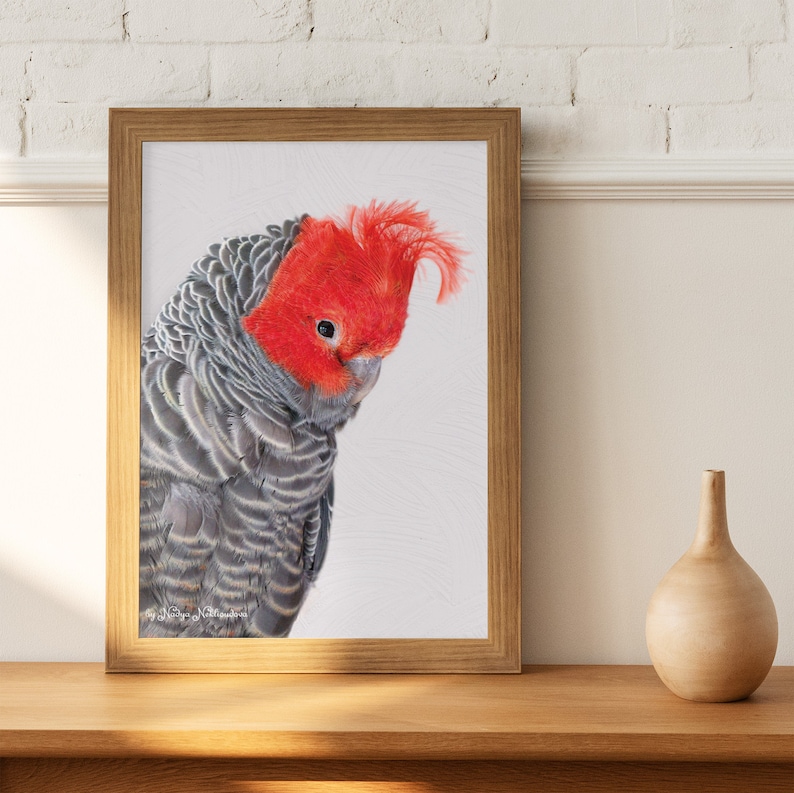
“Instead of leaves, feathers or other material, gang-gang’s make a cosy bed of chewed bark for their eggs.” “They use their beaks to strip bark off trees to line hollows in preparation for egg incubation,” Taylor says. "Gang-gangs are a canopy specialist and occur primarily in forest and woodland habitats," Taylor says.ĭespite being Australia’s smallest black cockatoo, gang-gangs have notoriously powerful beaks. They were one of several mainland birds introduced to Kangaroo Island in South Australia between 19 when part of Flinders Chase was identified as a sanctuary due to its lack of pests. Until the 1960s, their habitat even stretched as far south as King Island, off Tasmania's northwest coast. They occur along the Great Dividing Range from the central north coast of NSW, through the ACT and central and southwestern Victoria, to the South Australian border," Taylor says. "Gang-gangs are endemic to eastern Australia. While they hold a special spot in the heart of Canberrans, you'll also find gang-gangs well beyond the territory. "Some gang-gangs move to lower elevations in winter but some remain in areas with higher elevation," Taylor says. (The Southern brush-tailed rock-wallaby was chosen as the ACT's mammal emblem in 2018.) The gang-gang is also the insignia for the ACT Parks and Conservation Service and the Canberra Ornithologist Group - our local bird loving group.

When the Australian Capital Territory adopted the gang-gang as its emblem in 1997 it was the only state or territory to feature a bird as its faunal emblem instead of a mammal. Many compare their call to the sound of a drawn-out creaky door." If you can't get close enough to identify it, try listening instead. "Their most distinctive trait is their call that is often heard while they are in flight.

"They are not as commonly spotted as other similar sized parrots and should certainly not be mistaken for the much more common, but also beautifully coloured, galah."

"The males boast a spectacular red head and both the males and females have a wispy crest." "Gang-gangs are an incredibly beautiful parrot," Taylor says. Gang-gangs, one of 14 cockatoo species in Australia, are crowd favourites for their slate-grey feathers with blushes of pink, the male's distinctive red crest, and their quirky call. We asked our gang-gang guru what we know about the birds, what we still need to find out, and what makes these charismatic cockies special. No formal research or monitoring has been conducted about the species, says Stacey Taylor, a Master's student at The Australian National University (ANU) who is studying the patterns of occupancy of the gang-gang across the ACT. That became clear in this year's Bird of the Year poll, where they finished third out of 50 Australian native birds.ĭespite their popularity, we don't know a lot about them. Psittacosis, feather picking, and lung infection.They are the faunal emblem of the Australian Capital Territory, but enthusiasm for the gang-gang cockatoo stretches far beyond the Canberra bubble. The otherwise healthy birds can be susceptible to The bird and the cage and everything that it uses should be If you decide to leave the bird out of the cage for a few minutes, rather hours, then keep a watchful eye as it might hurt itself from the fan or furniture. From bathing to feeding, everything has to be in a proper order, without getting skipped.

Your time and energy both are required for the well-being of your gang-gang cockatoo. Apart from this, nutsĬould also be included from time to time. Occasional treats like meats are good for breeding pairs. The three items should be given in one third proportions (each). Vegetables is the key for maintaining a healthy eating habit for gang-gangĬockatoos. A combination of pelleted diet along with fruits and


 0 kommentar(er)
0 kommentar(er)
